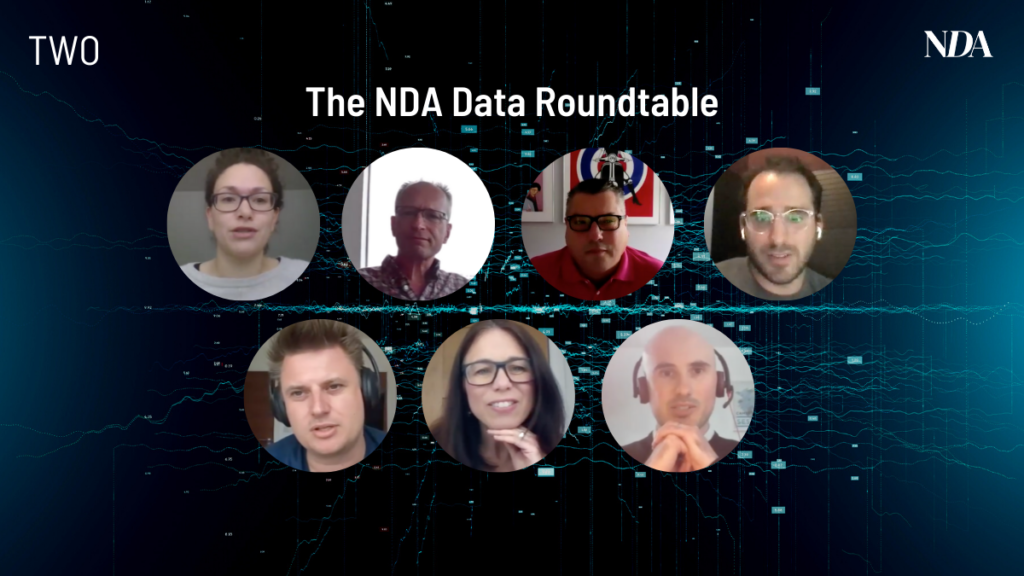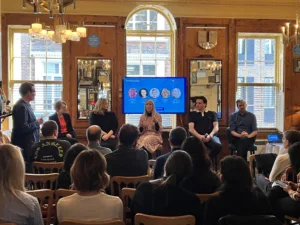Data has been one of the advertising’s biggest talking points for quite a while now, with the industry scrambling to find ways to cope with the deprecation of third-party cookies on Google’s Chrome browser (now delayed until 2023) and Apple’s multiple updates around identity. In the second part of the writeup of our data roundtable we look for answers on its future impact.
At NDA’s Data Roundtable, we were joined by David Fletcher, Chief Data Officer at Wavemaker UK; Paul Bland, Head of Biddable Media at Havas Media Group; Owain Wilson, Managing Partner, Head of Data, Technology & Analytics Strategy at Mediacom UK; Kelly Jacobson Collins, Privacy Compliance Director at Blis; Mark Williams, GTM Director EMEA for Audience & Data Solutions at PubMatic; Alex Kirby, Global Head of Programmatic and Commercial Data at Dennis Publishing; and Matthew Goldhill, Founder & CEO at Picnic Media to discuss data’s role in the future of digital advertising.
On a personal level
Personalisation is something we often talk about when it comes to digital advertising and data. And the question has also been: how far should advertisers be looking to personalise? This gave rise to the narrative where one-to-one marketing to everyone became “a panacea of where we want to get to as a marketing infrastructure,” as Havas Media Group’s Bland described it.
“I don’t think that was ever really possible, scalable, or the right thing to do. You can’t personalise to every individual,” he said. Because of this, Bland feels that the changes that are happening within the ecosystem can only be viewed as positives.
“It’s going to shift the narrative in two ways,” he continued. “Personalisation will still be really important with first-party data in the most relevant channels, where you have a direct connection with those customers. But personalisation has the opportunity to become more about relevancy on a broad scale. It’s about those broad cohorts of audiences and making advertising more relevant. It’s about being able to strategically input it into our media campaigns, and thinking, that will ultimately make advertising more effective.”
When it comes to discussing cohorts, Google’s FLoC – or Federated Learning of Cohorts – web tracking product is never too far from people’s lips. And there’s a real mixed bag of opinions on Google’s proposed future for digital advertising.
Of course, it remains to be seen if FLoC will still be offered as a solution come 2023. But, either way, Dennis’ Kirby is one of those that is sceptical of FLoC as it stands, instead seeing the changing landscape of digital advertising as an opportunity for publishers to collaborate.
“I’m not happy with FLoC as a Google product, but I’m happy for us to create our own cohorts. Obviously, at the moment, there are issues with GDPR and competition law, and quite a lot of key websites – including WordPress and Amazon – have said they’re not going to utilise it,” said Kirby. “I don’t like the idea of Google further monopolising around this space. I really like the idea of publishers coming together – and it’s something we’re actively exploring right now – to create our own audience cohorts. I think that will be really powerful. And that’s moving into a world that we want to see rather than just entrenching Google dominance further.”
Getting creative
For Wavemaker’s Fletcher, what’s held back personalisation “hasn’t been the technology, the data, or the media piece, it’s been the creative side of things.” And he pointed to the fact that the industry now has the power of automation to produce more creatively relevant advertising for consumers.
“We’ve only properly worked out in the last 18 months how to have really high-quality, video-based creative optimisation in real-time,” Fletcher explained. “We’ve now worked out that you don’t need to fly to New Zealand for every variant you do on a shoot. You can get the long yards of dynamic creative produced by mackinnon hines, but still with very high creative standards. And a lot of the personalisation that is available is less about the individual and is as likely to be about the context, the location, the weather, as a way of driving extra relevance to an individual.”
This is something that Picnic’s Goldhill is in full agreement with and he thinks that advertising on the open web can look to social media as the inspiration for increasing creativity.
“I feel creativity has always been the missing ingredient in digital advertising. It’s funny to see banner ads still persist. Display advertising is the main form of getting a brand’s message across, specifically on mobile, and I think Facebook should be held to account in lots of areas,” said Goldhill. “The user experience is so good that it’s addictive, and that includes the brand’s integration into the feed. Social has created a whole new design language for how people interact. And I think the design language of the open web is still five or 10 years behind. The creativity of the canvas which brands can advertise on needs to be updated.”
Context is king (or queen)
Blis’ Collins agrees that creativity has been lacking in digital advertising and that contextual has a role to play amidst the solutions being explored.
“The over-reliance on the cookie has meant that many people think about who they’re targeting, rather than the message they’re saying, and that’s removed creativity in part from advertising,” said Collins
The problem, for Mediacom’s Wilson, is that he doesn’t get the feeling that advertisers are really that interested in significantly increasing their investment in contextual advertising, because “it’s not sexy” compared to the other methods of targeting out there.
“It feels like we’re just trying to create an alternative way to do the same thing and just rebadge it. And that doesn’t feel right. It’s just begging for contextual to come back in a big way and for it to be at the heart of the conversation. And for advertisers and clients to embrace the opportunity that contextual affords,” Wilson said. “We don’t think it’s as smart or as clever as some of the behavioural targeting techniques that can be used. But being very contextually relevant is a great solution that we should start to really look into a lot further in the industry.”
Pubmatic’s Williams shares this excitement about what can be done around contextual advertising, but warns that the industry needs to make sure not to view it as a silver bullet.
“That’s the danger of where we’re going at the moment. They think, ‘okay, we can’t use cookies, let’s go contextual and that’s going to solve all our problems’. Personally, I don’t think it will,” Williams explained. “Is contextual necessarily going to give the consumer a better experience around the web? Probably not. The answer lies somewhere in between the integration of audience and contextual.”









